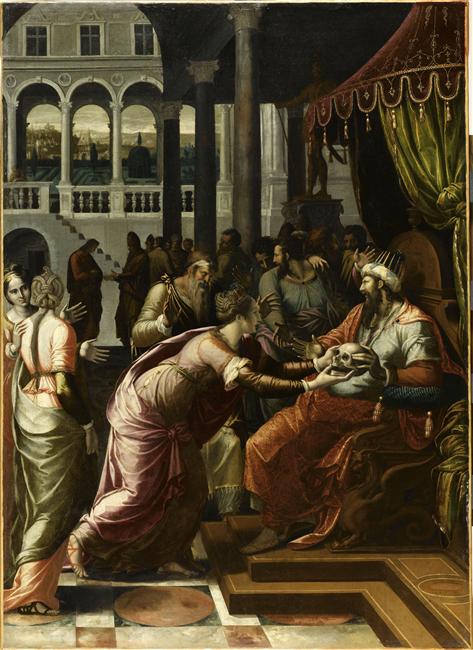Louvre acquires rare surviving painting by obscure Italian artist

Luca Penni
(around 1500-1557)
Augustus and the Sibyl from Tibur
Oil on Panel – 84 x 103 cm
Paris, Musée du Louvre
Photo : D. R.
The Art Tribune reports that the Louvre has recently acquired a rare surviving painting by the little known Luca Penni, a Florentine artist who spent considerable time in France. It joins two other works – one by Penni and the other from his workshop. Penni is largely known through his drawings, such as the richly drawn Entombment at the Getty (below), and engravings after his work – most paintings do not survive. While Penni may be obscure, he ran with some significant artists according his bio on the Getty’s Web site:
Luca Penni came from a family of Florentine weavers and may have been Raphael’s pupil in Rome, since his brother had an important position in Raphael’s Roman workshop. In the late 1520s, Penni worked with his brother-in-law Perino del Vaga in Genoa and Lucca. In 1530 Penni traveled to France, where he remained until his death. From 1537 to 1540, he collaborated with Rosso Fiorentino and Francesco Primaticcio at the château of Fontainebleau. He also worked outside the court as a painter, draftsman, and tapestry designer. Penni’s drawings for the Story of Diana served as models for a set of tapestries produced for King Henry II. His documented works include portraits and religious subjects. Penni settled in Paris in 1550, and from 1553 he worked primarily as a designer of engravings for Étienne Delaune and others. Engravers in France, Italy, and Flanders widely reproduced his designs.

Luca Penni
Italian, about 1550
Black chalk, pen and brown ink, and brown wash, with white gouache heightening
16 15/16 x 23 5/8 in.
85.GG.235
The painting, in a “poor state of conservation” according to the Art Tribune, was purchased from the Jan Muller Antiques gallery in Brussels. Of the subject matter, the Art Tribune notes:
Augustus, wishing to find out if there would one day be a greater man than he, asked the sibyl the question ; she answered by pointing to a heavenly apparition of the Virgin and Child. The scene takes place at the top of the Capitol, overlooking the Roman forum which we can glimpse in the background, on the site where the Aracoeli basilica would be erected (the sibyl had pronounced the words : “Haec ara coeli” that is, “This is heaven’s altar“).
Other Penni’s at the Louvre include The Justice of Othon (below) and a studio work Diana and Acteon (below).

La Justice d’Othon (?), Penni Luca (1500-1556)
Crédit photographique:
(C) RMN-Grand Palais (musée du Louvre) / Stéphane Maréchalle
Technique/Matière: huile sur toile
Hauteur: 1.020 m. Longueur: 0.740 m.
Paris, musée du Louvre

Diane et Actéon, Penni Luca (1500-1556) (attribué à)
Crédit photographique :
(C) RMN-Grand Palais (musée du Louvre) / Daniel Arnaudet / Gérard Blot
Hauteur: 2.650 m. Longueur: 3.670 m.
Paris, musée du Louvre